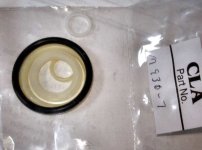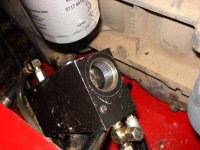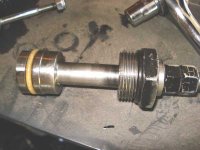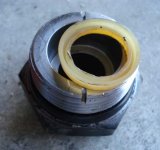MikeOConnor
Silver Member
- Joined
- Dec 16, 2002
- Messages
- 173
- Location
- Western Wisconsin
- Tractor
- Two Power-Trac 1850s (preferred for mowing and grapple-bucket clearing type work on really steep hills). Kubota M680 for snowblowing, grading, bucket.
J_J said:Item #2 That unit is the accumulator all by itself. The rest of the stuff in the picture is the apparatus that utilizes the stored energy to activate a cylinder, a valve of some kind, or a control rod. You said somethng was leaking. A little or a lot?
I'd put it in the middle of that "a little" to "a lot" spectrum. Introducing a new term, I'd call it "mop-able". I isolated the leak to the charging pump, talked to Terry about it, further isolated it to the pump itself rather than the little nipple fitting, and he sent me a rebuild kit for the valve assembly. The conversation went like this;
Terry; "the oil appears on the nipple?"
Mikey; "nope, it's showing up on the spring on the valve."
Terry; "Ah, you've blown the seals in valve, I'll get a rebuild kit to you on UPS."
So I think this happens with some regularity.
I've put a picture of the kit on this post as an attachment -- the two biggest circles (black, and white) are O-rings, the next biggest is a seal, and the little ones are all O-rings.
Terry described what to do. He cautioned me to measure where the spring-retention nuts were BEFORE I took them off, so I could get them back in the right place -- they control the pressure. I imagine the "right" way to do this is put some kinda pressure meter on that nipple fitting, but he said "just put the nuts back where they were, you'll get within 100 pounds." <grin> A guy after my own heart.



